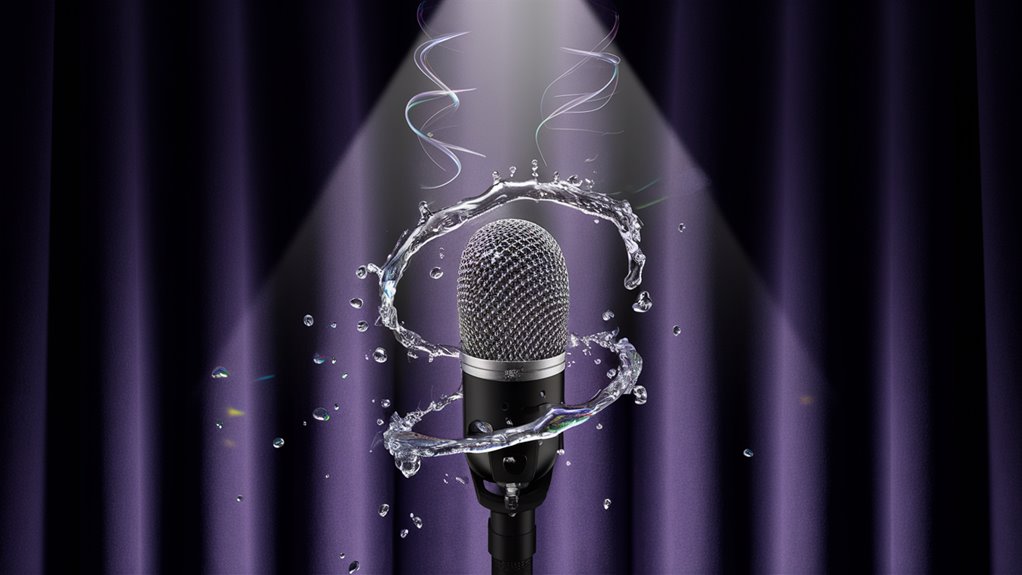Easy Ways to Sing Better at Karaoke

Doing well at karaoke means using clever tricks to make simple singing fun for all. Start by picking the right song – choose ones that fit your voice to show your skills and make it easy.
Key Singing Tips
- Breathe from your belly is key for a great karaoke show. Do deep breath exercises to hold notes longer and keep your voice smooth in all songs. Good breath control lets you sing loud and hit notes just right.
How to Use the Microphone
- Hold the mic right about 4-6 inches from your face, tilt it a bit up. Change how close you hold it — closer for soft parts, further for loud parts — to keep the sound even.
Connect With the Audience
- Look at different people in the crowd and make eye contact with each for a few seconds. Stand with your feet apart, ready to move.
Show Your Feelings
- Show your face to express the song’s mood. Happy or slow, let your face help tell the story. Mix good breathing, mic handling, looking at the crowd, and showing feelings to charm the audience with your singing.
How to Pick Songs That Suit Your Voice for Karaoke
Know Your Voice
- Learning your vocal range is very important in karaoke.
- Use a piano or a keyboard app to find your comfortable notes, from low to high.
Plan Your Song Choices
- Check songs before you choose them.
- Find songs that fit your voice by knowing your type:
- Baritones go low
- Tenors go high
- Altos are in the middle for women
- Sopranos hit the high notes
Smart Song Choices
- More tips on picking songs:
- Try the chorus first
- Look up keys online
- Think about key changes
- Select tunes that show your best
Better Shows
- Choose songs you can nail over tough ones that don’t fit your range.
- Pick fun over hard to make the crowd happy when you plan your songs.
Master Breathing for Singing
Basic Breathing Methods
- Deep breaths are important for great singing.
- Start by watching your belly move, not your chest, when you breathe. That’s using your diaphragm right 호치민 퍼블릭가라오케
Control Breath During Shows
- Plan your breaths to improve your singing. Take deep breaths at the start of a line, support it with your body core, and keep the breath going as you sing.
- Mark spots for breaths in your song to not run out of air mid-line.
Keep Notes Smooth
- Practice holding tones with steady breath support.
- Start with short holds, move to longer, using a metronome.
- Your posture—straight and relaxed shoulders—helps make everything better.
Nail Perfect Pitches in Karaoke

Perfect Your Pitch
- Pitch does a lot for good karaoke.
- Use a tuner to find your usual pitch. Practice single notes, record them, and check if they are right or off Everything Running Smoothly
Better Pitch Skills
- Try interval training to master accurate note jumps.
- Use an app to keep notes neat and your voice flowing well from low to high.
- Break songs into parts to ace them.
Connect Deeply With Your Listeners
Make Them Feel Deeply
- Making real connections turns a forgettable karaoke into a memorable one.
- Learn how to draw people in, make them join the fun.
Eye to Eye
- Look around, connect as you sing. Face them, pull them into your show.
Handle the Mic Like a Pro
Main Mic Techniques
- Handling the mic is important for good sound.
- Hold it a bit off, move it with the song for a clear voice.
Hold It Steady
- Keep it steady, use one hand, stay firm for the best sound.
Pro Mic Tips
- Don’t cover the top, keep it open
- If you use a cordless mic, keep it clear for the best signal.
- These tips ensure you sound sharp and professional.


